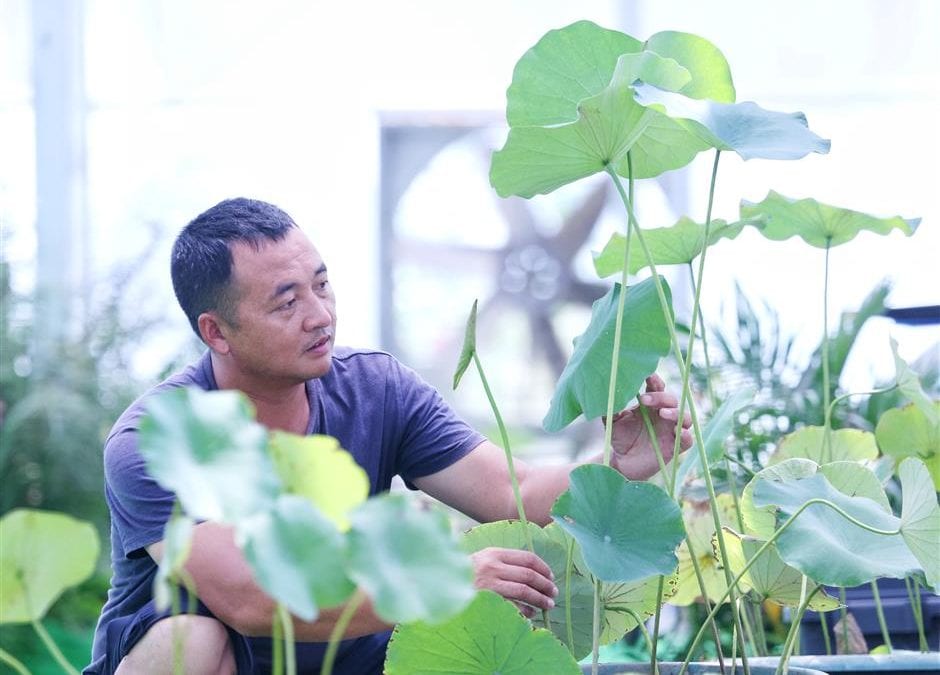Tian Lizhi has introduced and developed almost 1,000 lotus and water lily breeds in Shanghai’s Xinbang Town. Waves of jade green lotus leaves rest on the water and beautiful flowers emerge from beneath the gleaming surface. Wild birds hover over the water at dusk while sparrows swoop and chirp in the twilight. And on the nearby country road, flocks of quacking ducks waddle among chickens. Just an hour’s drive from the city center is Xinbang Lotus Garden, an idyllic pond sitting quietly in Songjiang District in southwest Shanghai, an oasis of calm away from the busy city life. Tian Lizhi, however, is too busy to enjoy the countryside tranquility. Tanned and sweaty, the lotus grower, 45, makes dozens of patrols to check lotus growth, and shuttles back and forth between the pond, the greenhouse and his office. “Summer is the busiest season for me,” he says with a big smile. “But looking on the bright side, I only need to work half of a year. Isn’t it great?” Influenced by his uncle, a lotus expert working in the United States, Tian developed a great passion for the plant, and gradually learnt agricultural expertise from theory to practice. In 2015, Tian was invited to develop new breeds for the annual Songjiang Lotus Festival in Xinbang Town. Laid out like a giant lotus leaf, the town has earned its reputation as “the home of the lotus” for more than 1,500 years. “When I first came here, there was only one breed,” Tian says. Over the past four years, he has introduced and developed more than 800 new breeds and more than 150 water lilies, making the town the biggest lotus-breeding center in east China, with a water area of more than 4 square kilometers. From the most common Zilian breed that bears seeds to the precious Zhizun Qianban, which can have more than 1,200 petals on one single flower, and Hongchun shaped like a red lip in full blossom, Tian has cultivated a lotus kingdom in Songjiang. The breed Zhizun Qianban A lotus blooms in the early morning and slowly closes […]






